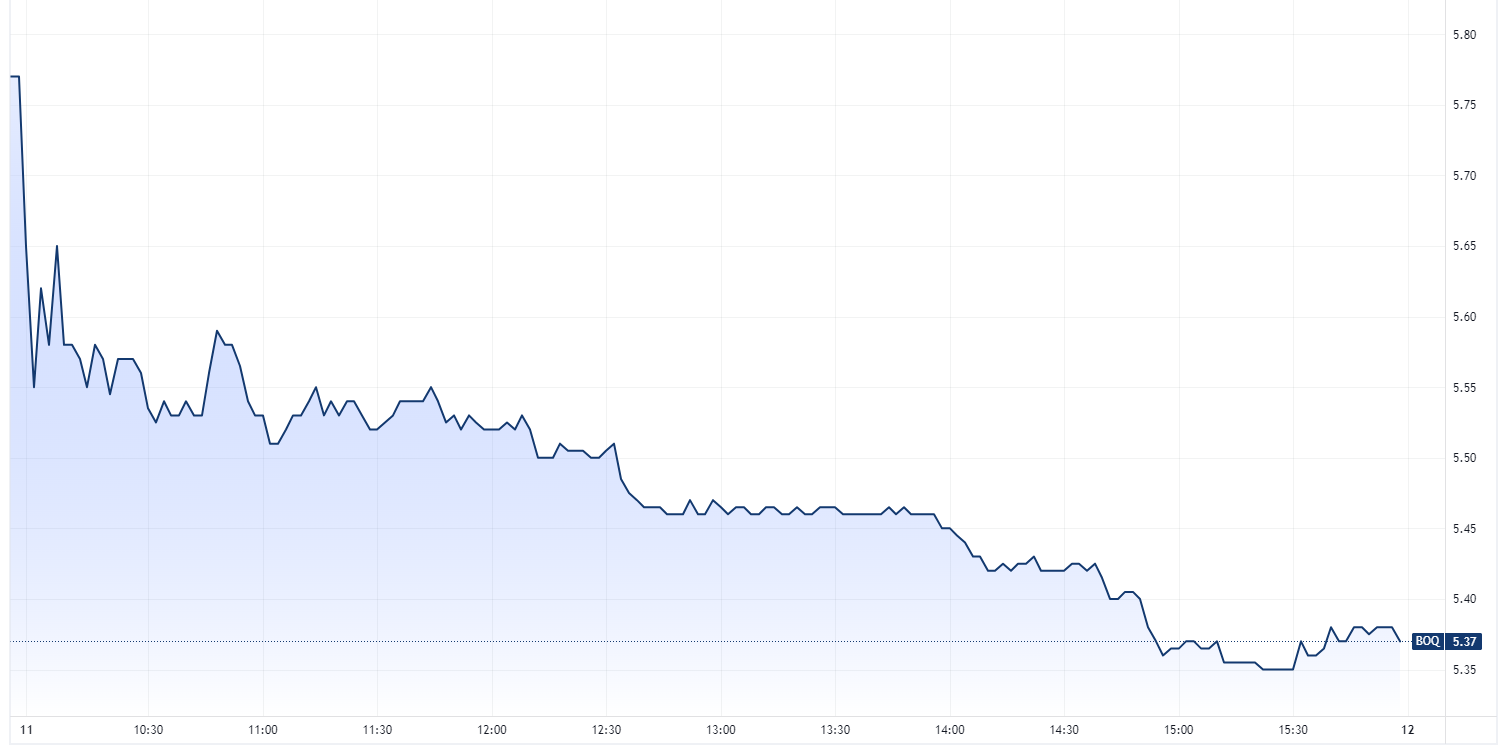BOQ shares near 3-year low: Is it a falling knife or a value opportunity?
Bank of Queensland (ASX: BOQ) shares sank another 7.4% to $5.35 on Wednesday after its FY23 results presented a sombre picture including weaker-than-expected earnings, intense mortgage competition, further margin deterioration as well as near-universal expectations from brokers of more pain in the near-term.
Shares in the troubled lender now trade at almost half their October 2021 peak, down 21% year-to-date and close to three-year lows. But a bank’s a bank, right?
At what point does BOQ build itself into the “better bank” it speaks of? Or maybe it remains a falling knife narrative that leaves dip buyers and value-seekers with more pain? I explore some of the key takeaways from the results and data points below.
FY23 results at a glance
- Statutory net profit of $124 million, down 70% due to large one-off items including an impairment of goodwill and ME Bank integration costs.
- Cash net profit of $450 million, down 8% due to higher operating costs and loan impairment expenses.
- Net interest margin of $1.69%, down 2 bps from FY22 due to higher competition and higher funding costs.
- Operating expenses of $1.01 billion, up 8% due to wage inflation and technology investments.
- 2H23 dividend of 21 cents per share, down 12.5%.
Analysts were expecting a cash net profit figure of $470 million (4.3% miss) and net interest margins of 1.71%.
FY24 outlook: The nail in the coffin?
The FY24 outlook offered little reprieve to current concerns about the economy, margins and earnings. BOQ’s outlook slide noted the following:
- “Increasing risk into FY24 due to elevated cost of living and the lagged impact of sustained high interest rates.”
- “Slower credit growth whilst BOQ continues to prioritise economic return over volume growth in a highly competitive environment.”
- “We anticipate mortgage pricing will need to adjust to provide returns above banks cost of capital.”
- “Deposit competition to remain intense as industry Term Funding Facility refinancing continues.”
BOQ said it will be targeting a dividend payout ratio between 60% to 75% of cash earnings. The 67.5% midpoint was below analyst expectations including:
- Citi: 74.6%
- Morgan Stanley: 72.6%
- Goldman Sachs: 71.6%
Remuneration and accountability
My colleague Kym Sheehan also notes a few red flags surrounding director remuneration and targets:
- The Board determined to reduce individual directors’ base fees by 20% for FY24
- The CEO has asked the board that he forgo his FY23 short term variable remuneration
- The Board decided that any unvested and/or restricted shares held by former executives will lapse
- Current executives missed out on not only the FY23 performance shares (the annual bonus at BOQ), but have also forfeited their FY22 performance shares.
A closer look at the selloff
Expectations were already extremely negative heading into the result. All major brokers including Citi, Morgan Stanley, Goldman Sachs, JPMorgan and more were Sell rated, with target prices ranging from $5 to $5.75.
BOQ shares have also experienced a gradual rise in short interest from around 5.6% in early July to 7.6% as at 5 October. Stocks with high short interest tend to open in a rather volatile fashion following major announcements such as financial results. Some general examples include:
- A better-than-expected result can trigger a short-squeeze (e.g. Domino’s Pizza during its FY23 results where it opened -5.3% lower but finished the session 11.8% higher)
- A weaker-than-expected result can often witness a gap down, followed by a brief bounce as shorts cover/take profits.
BOQ shares gapped down 2.4% on Wednesday but experienced a brief flick to breakeven shortly after the open. The stock would then trade sideways around $5.55 (-3.8%) through to the afternoon. The price action from there suggests a realisation that “the results and outlook are pretty bad” and the stock sold off to close at worst levels or $5.35 (-7.4%).

Where to from here?
Brokers including JPMorgan, Barrenjoey and Morgans lowered their share price targets following the results and flagged headwinds such as:
- Barrenjoey: Forecasts a 30% fall in FY24 earnings with a contracting loan book
- Morgans: Expressed concerns that NIM could reach an all-time low
- JPMorgan: Notes a costly and slow transformation as well as NIM underperformance due to higher exposure and lower-quality deposit book
Across 14-sell side analysts, the average target price fell 3.3% to $5.17. The majority of them remain Sell rated.
The only reprieve came from BOQ’s aspirational FY26 target to achieve a Return on Equity (ROE) of 9.25% (FY23: 7.3%) with a cost-to-income ratio below 50% (FY23: 58.0%).
There were also hopes that tailwinds may emerge in the medium-term such as industry repricing and potential RBA rate cuts in FY25. But as an embattled bank, maybe the only thing you can offer at this point is optimism and hope.
Analysts broadly agree that BOQ’s NIM would continue to deteriorate in the first half of FY24 before seeing a potential recovery in the second half.
This article was first published for Market Index on Thursday, 12 October 2023.
2 topics
1 stock mentioned
1 contributor mentioned

